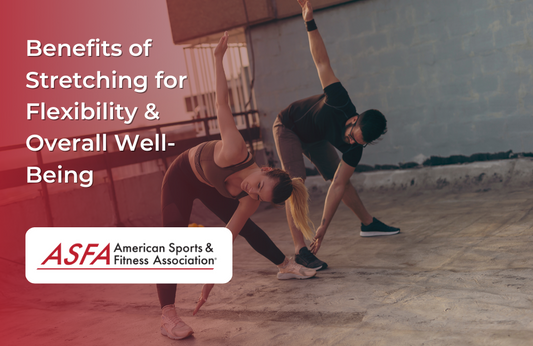Understanding Cross-Training
Cross-training is a fitness approach that involves incorporating a variety of exercises and training methods to improve overall athletic performance, prevent injuries, and enhance physical conditioning. Rather than focusing on a single type of workout, individuals cross train by integrating multiple forms of exercise to target different muscle groups, improve endurance, and develop well-rounded fitness.
By engaging in diverse activities, individuals can break through plateaus, reduce the risk of overuse injuries, and keep workouts engaging. Cross-training is commonly used by athletes, fitness enthusiasts, and those recovering from injuries to maintain strength, flexibility, and cardiovascular health.
Benefits of Cross-Training
Reduces the Risk of Injury
Performing the same movements repeatedly can lead to overuse injuries, but cross-training is an effective strategy for injury prevention. Cross-training allows the body to recover while still maintaining fitness levels by varying exercise selection.
Improves Overall Fitness
Incorporating different workouts challenges the body in multiple ways, leading to better endurance, strength, flexibility, coordination, and an improved fitness level.
Prevents Workout Plateaus
When the body adapts to a particular exercise routine, progress may slow. Cross-training introduces new challenges, keeping workouts effective and stimulating.
Enhances Muscle Balance and Strength
Different exercises target various muscle groups, helping to correct imbalances and reduce strain on specific areas of the body.
Supports Mental Engagement
Repeating the same workout can become monotonous. Cross-training adds variety, making fitness more enjoyable and sustainable over time.
Aids in Recovery
Low-impact cross-training activities, such as swimming or cycling, provide active recovery through aerobic activity while reducing stress on joints and muscles.
Common Types of Cross-Training
Cross-training can include various forms of exercise that complement each other and provide a balanced workout regimen.
Cardiovascular Training
-
Running or cycling for endurance
-
Swimming for low-impact conditioning
-
Rowing for full-body cardio and strength
Strength Training
-
Weightlifting to build muscle and improve bone health and density
-
Bodyweight exercises such as push-ups, squats, and lunges
-
Resistance band workouts for joint-friendly strength training
Flexibility and Mobility Work
-
Yoga to enhance flexibility and balance
-
Dynamic stretching to improve range of motion
-
Foam rolling for muscle recovery
Functional and Sport-Specific Training
-
Agility drills for coordination and speed
-
High-intensity interval training (HIIT) for endurance and power
-
Sports-based workouts such as basketball, soccer, or tennis for variety
For marathon runners, incorporating functional training can enhance cardiovascular adaptations and improve race performance.
Muscle Groups and Training
Cross-training is an effective way to target various muscle groups, improving overall fitness and reducing the risk of injury. By incorporating different exercises and activities into your training regimen, you can ensure that all muscle groups are being worked, leading to a more balanced and well-rounded physique.
One of the key benefits of cross-training is its ability to engage different muscle groups through a variety of exercises. For instance, while running primarily targets the lower body, incorporating weight training can strengthen the upper body and core. This balanced approach not only enhances overall fitness but also helps in correcting muscle imbalances that can lead to injuries.
Different exercises in a cross-training program can target specific muscle groups. For example, swimming is excellent for building upper body strength and improving cardiovascular health, while cycling focuses on the lower body and enhances leg muscles. Weight training, on the other hand, can be tailored to target certain muscle groups, such as the chest, back, or arms, depending on the exercises chosen.
Incorporating a variety of exercises into your training regimen ensures that no muscle group is neglected. This comprehensive approach not only improves muscle strength and endurance but also enhances flexibility and coordination. By regularly switching up your workouts, you can keep your fitness routine engaging and effective, ultimately leading to better overall fitness and reduced risk of injury.
In conclusion, cross-training offers a holistic approach to fitness by targeting various muscle groups through different exercises. This balanced training regimen not only improves overall fitness but also helps in preventing injuries and maintaining a well-rounded physique.
How to Incorporate Cross-Training into a Routine
Adding cross-training to a fitness regimen depends on individual goals and fitness levels, and it is essential to have a varied training plan. Some effective strategies include:
-
Rotating workout types – Alternating strength, cardio, and flexibility sessions to balance training.
-
Replacing high-impact workouts with low-impact alternatives – Using swimming, cycling, or rowing to reduce joint stress while maintaining conditioning.
-
Integrating active recovery – Using yoga, stretching, or light cardio on rest days to aid muscle recovery.
-
Adapting to fitness goals – Tailoring cross-training activities to support weight loss, strength building, or endurance development.
Conclusion
Cross-training is a versatile approach that enhances overall fitness by incorporating multiple types of exercise. It reduces the risk of injuries, prevents workout monotony, and improves strength, endurance, and flexibility. By integrating different training methods, individuals can achieve a more balanced and effective fitness routine tailored to their personal goals.
FAQs
How often should I incorporate cross-training?
The frequency of cross-training depends on fitness goals, but incorporating at least one to two different forms of exercise per week can provide significant benefits.
Can cross-training help with weight loss?
Yes, cross-training increases calorie expenditure and supports muscle development, making it an effective approach for weight management.
What are the best cross-training activities for runners?
Low-impact cross training workouts such as swimming, cycling, and strength training help maintain endurance while reducing stress on joints.
Is cross-training suitable for beginners?
Yes, beginners can benefit from cross-training by gradually introducing different exercises to build overall fitness while minimizing injury risk.
Does cross-training improve athletic performance?
Yes, cross-training enhances overall fitness, improves muscle balance, and prevents overuse injuries, all of which contribute to better athletic performance.





